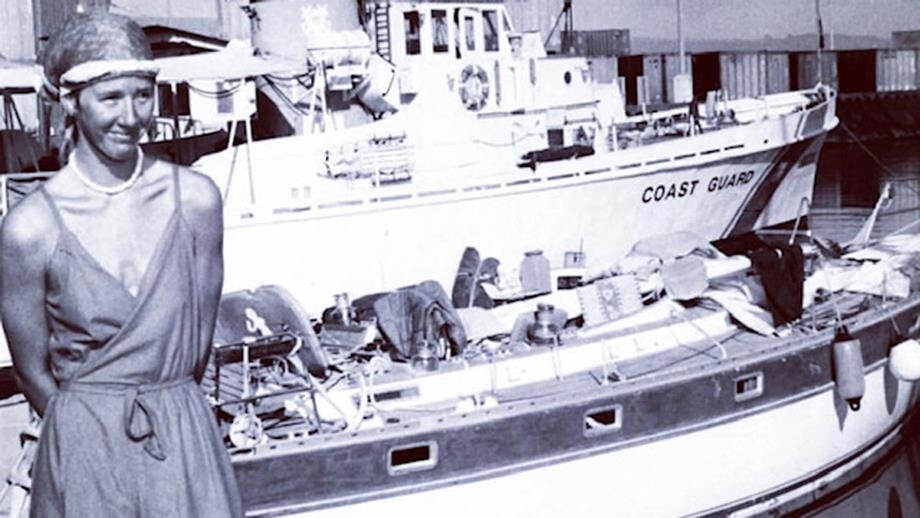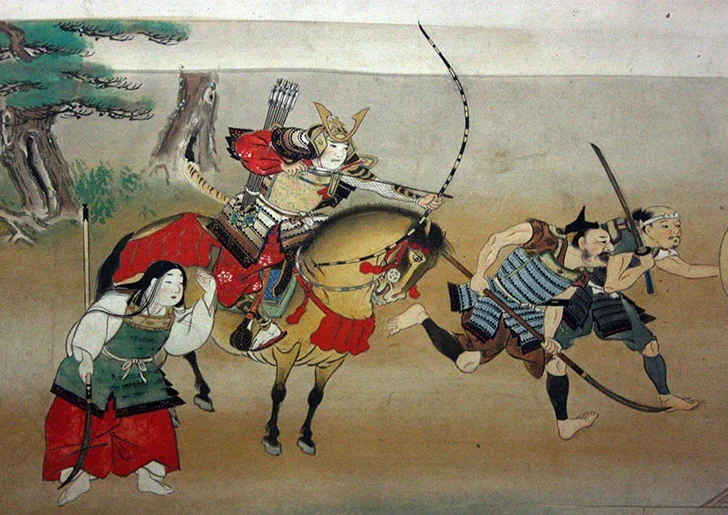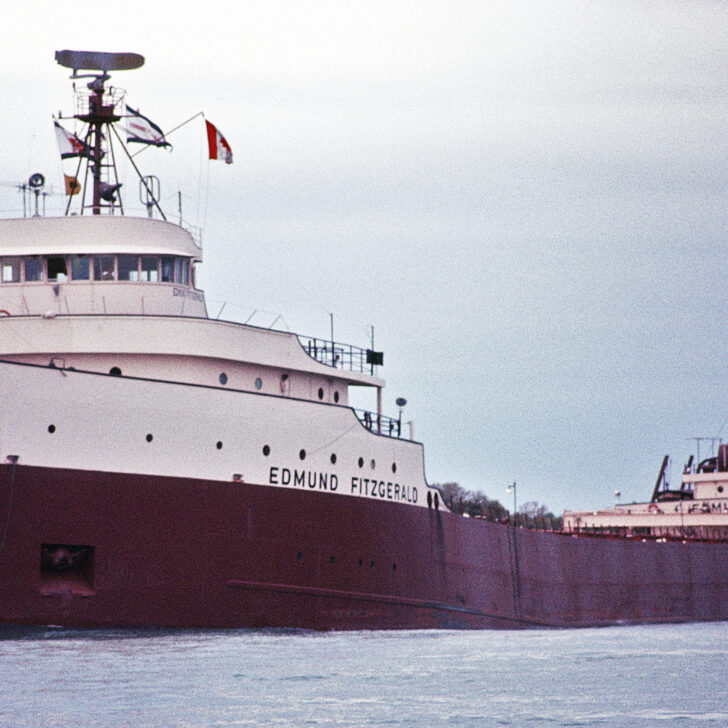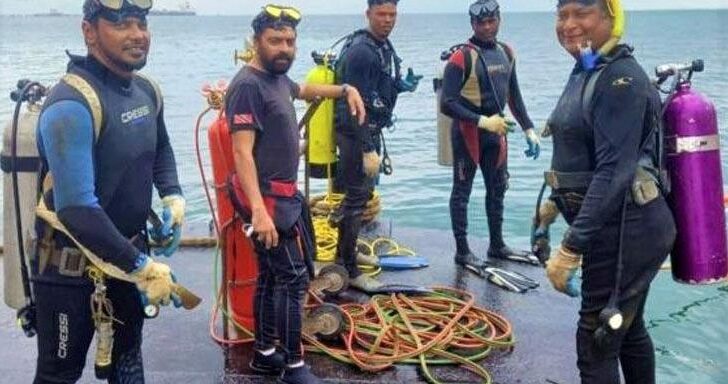In the vast blue waters of the Pacific Ocean, Tami Oldham Ashcraft and Richard Sharp embarked on a sailing adventure together in September 1983. The couple were delivering a luxury boat called “Hazana” from Tahiti’s Papeete Harbor to San Diego.
It was a routine trip, or so they thought.
Three weeks into their journey, Mother Nature would scupper their plans to enjoy their time in the open sea, and tragedy would strike in the form of Hurricane Raymond.
The once-tranquil sea turned into a tempest that battered not only the 44-foot boat but also the two voyagers within it.
The events that follow detail 41 days adrift in the Pacific Ocean, a story of surviving the unsurvivable, a tale so fascinating that it was the basis for the 2018 film Adrift.


The Violent Storm
Tami, 23, and her fiancé, Richard, 34, were certainly no strangers to the sea. Richard, in particular, was a strong sailor and was the one hired to deliver Hazana to its end destination in San Diego. Tami joined him to spend some quality time with her partner.
For the first two weeks, the journey was idyllic. The gentle waves and calming vastness of the Pacific proved to be a tranquil getaway for the pair.
However, on October 12, the peaceful calmness was interrupted by a Category 4 storm named Raymond. The waves, at 40 feet, engulfed the boat, causing Richard to send Tami below deck.
The waves became so violent, and the winds turned so forceful that the yacht capsized; mere moments before this, Tami heard her finance yelling, “Oh my God!”
The brutal gales knocked Tami off her feet, causing her to fall back and sustain a serious head wound. The bloody injury rendered her unconscious for almost 30 hours. When she awoke, she was alone.
Among the wreckage, she searched for Richard to no avail. The mast had been shattered, and the sail was in shreds. The navigation system had broken, as had the radio.

Tami had to not only deal with finding a way to land – of which there was none in sight, just endless water – but also deal with the very real prospect that her partner had died.
Isolated with nothing but a ruined boat keeping her afloat, Tami had to consider her next moves. She had few options but knew one thing: she would fight to stay alive.
Surviving The Unsurvivable
Tami assessed the situation. It was dire – the boat was severely damaged. In a disheartening discovery, she found Richard’s safety line dangling over the end of the boat.
She could only assume the hurricane had yanked him from his safety rope and thrown him into the ocean. She made her way to the cabin. It was flooded. Add to the fact that Tami was severely injured, things weren’t looking promising.
The bleeding cut to her head needed medical treatment, but she was nowhere near land and seemingly had no means of getting back on land.
Tami gathered her thoughts amidst mourning the loss of her fiancé and decided to try and fix the overwhelming damage the storm had caused. If she could get the yacht in a position to sail again, that would be her only chance at survival.
So, she got to work. Tami began pumping the water out of the cabin. She crafted a makeshift sail from a broken pole and a heavy canvas.
She also had a sextant, which is an instrument used to determine the angle between the horizon and a celestial body (the Sun, the Moon, or a star). The brass device was used alongside her watch in order to navigate the yacht.
The Hazana, once a luxury vessel, was now a shell of its former glory, but with Tami’s persistence, became sailable once again.
Luckily, the canned food stored below the deck remained intact. With a diet of peanut butter and tinned fruit, Tami navigated Hazana toward Hawaii.
With just her thoughts for company, Tami had time to consider the bleakness of her situation. She was confident Richard was dead, a thought that at times rendered her wishing to die, too.
As the days merged into one another, Tami found herself reminiscing about her time with Richard. She also considered the fact that she might not get out of her ordeal alive.
To combat the macabre thoughts, she told herself that if she lived, she’d make the most of her life.
Tami often found herself in floods of tears, an understandable and natural reaction to her situation. However, she often told herself to snap out of it and “quit crying.”
After all, crying depleted her body of precious water. She had a limited amount of drinkable water, so she reasoned that crying was a waste of resources.
Every day at noon, Tami would look through the sextant’s telescope and adjust it to measure the sun’s angle above the horizon. One day, she saw what she called “an isolated cloudlike shape” in the distance.
She believed it was Hawaii. She was filled with elation and even some dread about returning to civilization.
However, the next day came around, and the cloudlike shape was no longer there. Like a mirage in the desert, it seemed Tami’s mind had played tricks on her. Just like the plane she thought she saw.
Suddenly, she heard a voice, not a voice in her head, but as if it was on the ship with her. The sound of another human brought great comfort to Tami.
However, at this point, Tami questioned her mental state. She knew there was nobody else on the boat with her. She wondered if she should fetch the rifle that was below deck.
Deciding to take fate into her own hands, she loaded the gun and put the barrel in her mouth. Before pulling the trigger, the voice returned and told her to stop.
If she had taken her own life at that point, she wouldn’t have lived to come across a 300-foot Japanese research ship just days later.
After traveling 1,500 miles and spending 41 days at sea, it seems Tami had finally made her way to safety. Just like she’d planned, she’d made her way to Hawaii.
She’d made her way to safety despite the odds stacked against her.
The Aftermath
Tami pulled into Hilo Harbour and broke down in tears. She was finally safe. She’d lost a lot of blood but made it out alive, a feat almost impossible.

It wasn’t until she was back on dry land that she was able to properly process the trauma she’d endured and the grief she felt over losing Richard.
She suffered nightmares, waking up in cold sweats after dreaming of being lost at sea. She’d also have night terrors about Richard, too.
Tami also developed a fear of flying after her horror experience, and her head injury rendered her unable to read for years afterwards.
To honor Richard’s memory, she tied her engagement ring to a rose and put it out to sea.
Remembering him, she says he had a good sense of humor and that people were naturally drawn to him.
She added he was a voracious reader and that his lust for adventure was what made them compatible. She remembers him as a “beautiful person.”
As the years passed, Tami’s ability to read came back. She then began writing about her time at sea, something that helped her process the trauma of it.
She hadn’t been to therapy or sought help to overcome the mental anguish she’d been through, but she found that writing it all down was cathartic.
Unbeknown to Tami at the time, she was writing her memoir. Her book came to life on random scraps of paper, napkins, and on legal paper.
She put it all together, and it became Red Sky in Mourning: The True Story of a Woman’s Courage and Survival at Sea.
In turn, the book became a survival drama movie called Adrift. The film closely follows the real-life events that took place on the Hazana, but unlike the true version, Richard doesn’t die in the storm.
Instead, he and Tami fight for their lives together, finally making it to Hawaii. However, back on land, Tami soon realizes that Richard was nothing but a hallucination and has to confront the reality that he died at sea.
Ten years after her 41-day stint at sea, Tami met the man she would marry and go on to have two children with. The family lives a peaceful life on San Juan Island, Washington State.
It would be understandable if Tami never wanted to venture out to sea again. However, her brush with death didn’t deter her from returning to the waters. Tami says being at sea is a kind of therapy for her, and it’s a place she finds cathartic.
Around her neck is a pendant she always wears: a sextant encrusted with a diamond.
Sources
https://www.upi.com/Archives/1983/11/22/A-woman-who-spent-41-days-alone-in-a/6461438325200/
https://www.cosmopolitan.com/entertainment/movies/a21052066/adrift-true-story/
https://www.chicagotribune.com/news/ct-xpm-2003-03-19-0303180492-story.html













Leave a comment